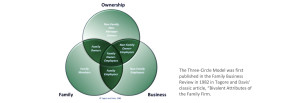Envisioning A Great Family Business
My blog this week is built around two quotes from Sam Johnson, the fourth-generation patriarch of the SC Johnson Company. The first:
“Each generation has the responsibility of bringing to the business their own vision for the future of the business.”[1]
Recently my wife and I spent a weekend at the Mohonk Mountain House on the southern edge of the Catskills in upstate New York.
Built by twin brothers Albert and Alfred Smiley in the 1870’s as a small getaway for family and friends, Mohonk Mountain House continues today as an historic resort hotel owned and operated by the Smiley brothers’ descendants. Subsequent generations have added to both the house and to the adjoining Mohonk Preserve whose over 9300 acres of trails, woodlands and pastures are open to guests of the Mountain House and the public.
I marveled at the scope and durability of the Smiley brothers’ original vision. While the house has been updated with modern conveniences, the descendants of Albert and Alfred have not moved far from the original vision. It retains its 19th century character, and the values of stewardship, reflection, and renewal are all evident to visitors and guests.
Again from Sam Johnson:
“A great family business, no matter its size, has to be more than a financial investment. To survive long term, it must be a social positive for the employees, a benefit for the community, a passion for future generations of the family, and committed to earning the goodwill of the consumer every day.”[2]
This kind of success starts with a vision–like the Smiley brothers’–no matter how small or how large; with an intent no matter how viable; with a first step no matter how insignificant, embracing the wisdom of Sam Johnson.
[1] Ernesto Poza, Family Business, 3rd Edition. (Independence, KY: South-Western Cengage Learning. 2010, 2007), 100
[2] Ibid., 294

